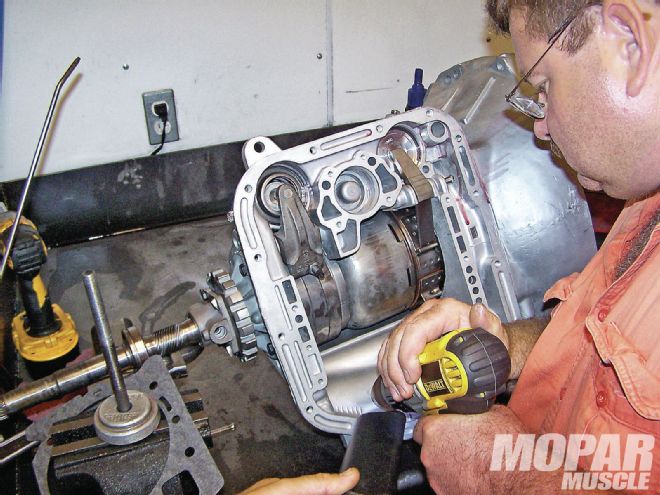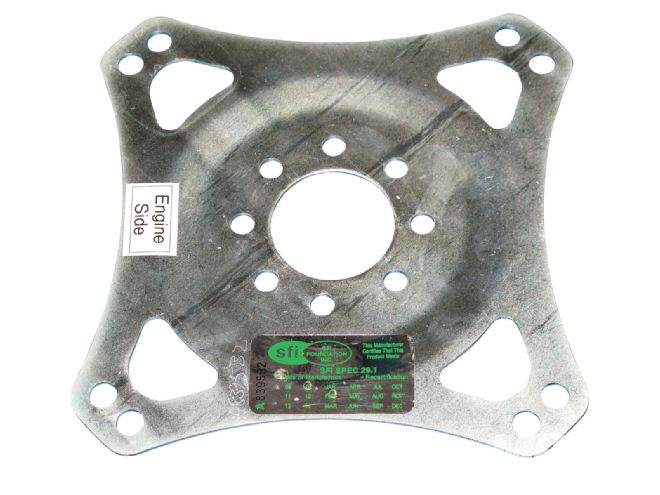
Of all the components that make up a Mopar performance vehicle, the automatic transmission is likely the least understood both by the general public, enthusiasts, and even some mechanics. It's little wonder though, as so many books and magazine articles are devoted to engine modifications and ways to enhance your car's power and performance, yet very few are dedicated to the inner workings of transmissions. Let's face it, money spent on components like aftermarket camshafts, cylinder heads, and carburetion will certainly enhance a vehicle's performance to a greater extent than the same money spent on transmission upgrades. But at some point that powerful big-block, small block, or Hemi in your Mopar will overpower a stock TorqueFlite transmission, requiring the transmission to be upgraded to handle additional power and torque.
While the 727 and 904 automatic transmissions may seem like black magic to some, the reality is that they operate on basic hydraulic and mechanical principles and can be modified to handle extreme levels of horsepower if the right components are chosen. So when it came time to decide which transmission to build for our 2010 Dodge Challenger bracket car, we carefully evaluated considerations such as the car's weight, tire size and gear ratio, as well as engine power and torque before choosing a transmission. And while some may argue that a 727 would be the logical choice for this application, we picked a 904 for its lighter total weight and lower internal friction.
The aluminum 904 was first introduced by the Chrysler Corporation in 1960, and is a design that evolved from the Chrysler PowerFlite, which was a two speed automatic, and then the cast-iron three-speed TorqueFlite which was durable but heavy. Originally featuring a rear hydraulic pump, pre-1966 TorqueFlites could actually be push-started since the pump was driven from the output shaft rather than by the torque converter as in modern versions. Both the 727 and 904 versions of the TorqueFlite are similar in design, although none of the components are interchangeable between the two with the exception of the valve body, though calibration is different.
Finding a 727 or 904 in a scrap yard is relatively easy. For our relatively high-powered application, however, a 1973 and up 904 unit is preferable since it contains beefier shafts and a larger rear bearing. Finding one of these 904 core transmissions can be more difficult given the fact that many of them were equipped with a lockup torque converter, which means the input shaft is incompatible with aftermarket performance converters like the 8-inch ATI unit we'll be using. With this in mind, we called A & A Transmissions and had them send us a race-prepped 904 case and input shaft, saving us the trouble of searching the scrap yards for a suitable transmission case. A & A also supplied the SFI approved transmission and bell-housing shield to meet NHRA and IHRA requirements.
Price Tag
A&A race prepped 904 case$275.00 A&A billet four-piston kickdown servo$110.00 Mopar Performance adapter Flex Plate$119.95 SFI approved shield$315.00 TCI 904 Racing master overhaul kit$152.81 TCI 904 Pro trans-brake valve body$831.25 TCI 904 deep aluminum pan$158.39 TCI Outlaw shifter$350.00 A&A 1350 904 rear yoke$225.00Installing a 904 (or small-block 727) behind a late-model Hemi engine is actually a very simple process requiring only a couple of specialty pieces. With the exception of a single bolt, the bell-housing pattern is the same, but the rear crankshaft flange of the late-model Hemi protrudes further aft than that of a small-block, requiring either a spacer or special flex-plate. The late-model Hemi crankshaft also utilizes eight bolts to hold the flywheel or flex-plate, but the spacing and bolt-circle is different than early Hemis. Fortunately, Mopar Performance has the proper flex-plate for this application, which has both the proper attaching bolt holes and offset, eliminating the need for a transmission spacer. These flex-plates are SFI approved and available from a variety of sources including Mopar Performance dealers such as Mancini Racing Equipment.
With our pieces coming together, the next step was to build our transmission. Assembling a 904 properly requires not only knowledge and experience, but some special tools as well. To handle the task we enlisted local Mopar shop and transmission specialist Tod Struck of Inline Performance Specialists. Tod has put together plenty of 727s for us over the years, and his attention to detail ensures the transmission will operate to the limits of the parts inside it. For those parts, we made a call to TCI.
We're not about to let you know how much power the 426-inch late-model Hemi we built for this car made, at least not yet, so you'll have to look for the details on the engine in a future issue of Mopar Muscle. What we will tell you, however, is that the engine we built with the help of Indy Cylinder Head made enough power that it should propel our 2010 Dodge Challenger to sub-ten second elapsed times in the quarter mile. Elapsed times under 10-seconds will make this car too quick to run in the Pro, or foot-brake bracket classes, so in order to be prepared to run in Super-Pro, a trans-brake is necessary. The trans-brake uses an electric solenoid to actuate the reverse band while the shifter is in first gear, and once the button controlling the reverse solenoid is released the car almost instantly leaves the line. In the Super-Pro (electronics) class, the trans-brake is used in conjunction with a delay box, and we'll explain that in a later article.
With this in mind, and knowing a good valve body is the key to quick reaction times and sharp shifts, we ordered a Pro-brake trans-brake valve body from TCI. This valve body requires some internal modifications to the transmission to work properly, but Tod at Inline Performance Specialists handled the mods with no problems. For the clutches, bands, and other associated parts needed to complete our transmission we ordered a 904 Master Racing overhaul kit from TCI as well. This kit includes all the normal high-quality pieces needed to rebuild our 904, including the clutches, steels, bands, seals, gaskets, and even bushings. Since we're taxing this 904 with a somewhat heavy car and high-powered engine, we also chose a TCI deep aluminum transmission pan to help dissipate the heat generated, especially in the later rounds of racing. For shifting, a TCI Outlaw shifter with a three-speed reverse pattern will be installed in the Challenger.
Using the above transmission components, along with factory four-pinion planetary gear-sets, shafts, and drums, Inline Performance Specialists got busy performing the necessary modifications and assembling our transmission. When it comes to a racing transmission, we would consider this 904 to contain the minimum modifications necessary to handle a moderately powered, somewhat heavy drag car. Of course there are plenty of parts such as billet shafts, aftermarket planetary gear-sets, and even rollerized components that we could have used to make this transmission even more bullet-proof, but using such components drives the cost up exponentially and shouldn't be required for our application. One of the things we enjoy doing here at Mopar Muscle is testing parts, and these parts will certainly be tested when we take this car to the track. We'll let you know how this 904 holds up to late-model Hemi power in future issues of Mopar Muscle.
 <STRONG>10</STRONG> To bolt the torque convertor to the flywheel when using an older-model transmission and a Third-Gen Hemi, a flex-plate like this one from Mopar Performance is required.
<STRONG>10</STRONG> To bolt the torque convertor to the flywheel when using an older-model transmission and a Third-Gen Hemi, a flex-plate like this one from Mopar Performance is required.